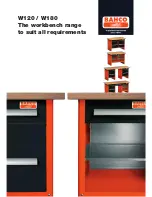
Warning:
The laser beams of an optical interface board or inside an optical fibre
can cause eye damage. Do not look directly into the transceiver or point the
transceiver at another person's eyes.
When connecting optical fibers, note the following:
■
An optical transceiver is electrostatically sensitive and it should be placed in an
ESD-preventive and dust-proof environment for transportation, storage, and
use.
■
Optical fibers and optical transceivers not in use must be protected with dust
caps seated properly on the connectors. If the optical transceiver is contaminated,
carefully clean the optical interface.
■
Keep the surface of all optical connectors clean and free from scratches.
■
Do not squeeze, distort, fold, or repair an optical fiber.
■
Do not bend the optical fiber into a circle with a radius less than 5 cm. Otherwise,
the optical fiber may be damaged, which reduces the system performance or
causes data loss.
To connect optical fibers
1
Put on proper ESD-preventive gloves or wrist straps.
2
Take the cap of the optical transceiver out of the interface of the tape out card
(two-port 8 Gb FC HBA).
3
Remove an optical fiber from its packaging.
4
Remove the caps of the optical connectors.
5
Plug an optical connector into the interface of the card.
6
Ensure that the optical connector is securely inserted into the optical transceiver.
7
Connect the other optical connector of the optical fiber to a Fibre Channel
switch.
See “About the cables” on page 37.
Connecting the power cables
Caution:
The equipment should be completely installed and all network cables
should be connected before any devices are connected to power sources.
The NetBackup appliance has two power modules that are accessible on the rear
panel of the device. Each module requires a separate AC power cable or PDU cord.
43
Cable connections
Connecting the power cables
















































